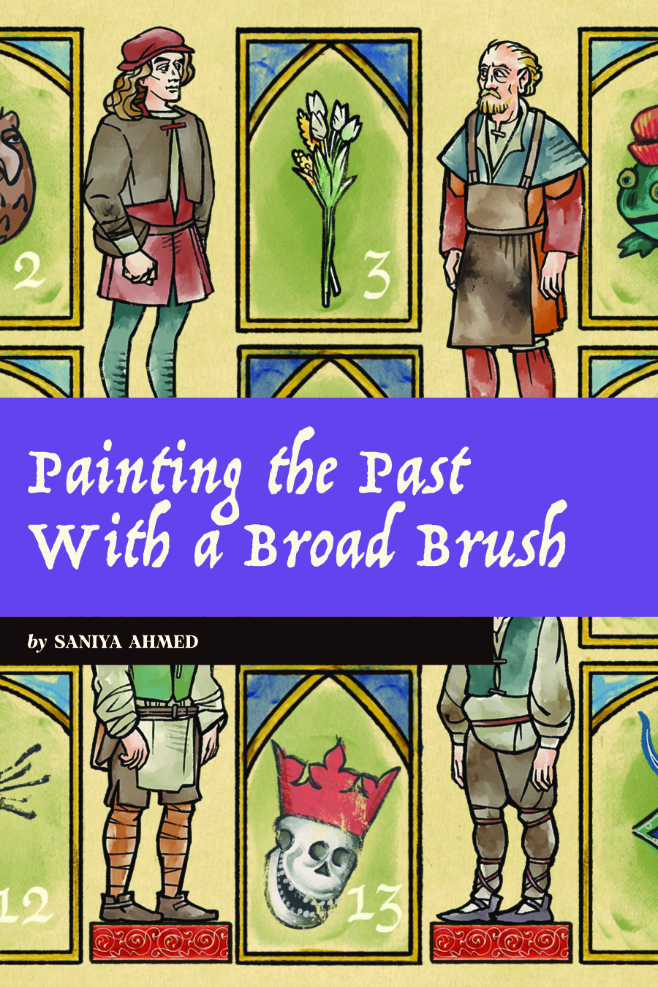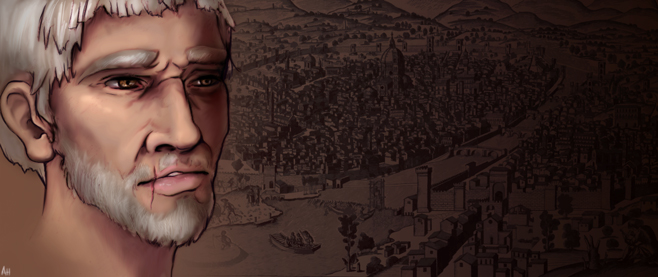
Painting the Past With a Broad Brush
This is an excerpt from a feature story from Unwinnable Monthly #163. If you like what you see, grab the magazine for less than ten dollars, or subscribe and get all future magazines for half price.
———

Beyond records and archeological findings, all sorts of physical artworks reflect societal influences from its time period, almost as a window into the past state of affairs. Art history tells a story between the lines of archeology and significant moments in time through art mediums, techniques, resources, intentional composition and motivations. Still, I find that the examination of intimacy and ordinary life in art is lacking when attention goes toward religious and imperial powers. Mundane, everyday things are forgettable and not as well-preserved through time as a monument. Although visual art says a lot without words, speculation fills in the gaps to make sense of the past, which is also opportune for fictional storytelling in games.
Without time travel, we’re never going to know what things were exactly like, allowing for creative interpretations and criticism – this does not excuse stereotyping, and having empathy and acknowledging the media’s impact on people today is important. I’m drawn to historical games that leverage visual art as an influential aspect of human history and entertain my interest in the time period’s work. It might seem restrictive, but I find similar thrills in examining art history and playing historical games that rely on artistic influences – I’m not so interested in anything burdened with repeating historical events verbatim.
That desire wasn’t fulfilled until I played a narrative adventure game called Pentiment. It’s an intimate look at a fictional, dreary, rural town called Tassing in 1500s Bavaria, Germany, with alluring people and repugnant classist society while offering a critical view of the Kiersau Abbey under Christendom. We take the perspective of an educated artist Andreas Maler from Nuremberg, working on the illuminated manuscripts in the Kiersau monastery’s waning scriptorium. The art direction was evocative of art aesthetics from that time period and region, and the dialogue fonts were indicative of literacy in Tassing and Kiersau. The set tables during meals with families reveal their standard of life. I’m not too familiar with the Bible, but I noticed many religious conversations and condemnations – even how time is divided throughout the day – that dictate the outcomes of the murder mystery story and the unfolding of Tassing as a struggling town. I find the political, mythological and religious parts of art history too often overshadow the mundane quality of life, but Pentiment was the fruition of all of it.

Through studying artwork, I’ve learned how Northern Renaissance prints, illuminated manuscripts and paintings of the Reformation turned their attention to the intimate relationship with God, reflecting on the tussle between Protestants and the Italian Catholic church. Some artists of the time even took the attention away from religion, placing it onto the secularism of everyday people and landscape – basically like the art of Pentiment. I know the works of artists Albrecht Dürer, Lucas Cranach and Pieter Bruegel, but they are no Andreas Maler, the miserable artist, and an even more miserable detective. Also, Pentiment creates an atmosphere of doubt and suspicion through close connections with everyday people and repeatedly acknowledges the mythological Pagan and Roman influences of past Tassing affecting its present. The villainy is vague, but the distinction between the people who practice their faith as powerless in their rural town under the Holy Roman Empire compared to the people who preach creates most of the tension.
As time passes through Tassing, the architectural dialogue between the old and the new, along with community organizing brought on by increased literacy showed the continuity of history. Through Maler’s rapport with the townspeople, the player can find commonality in hearing their concerns, desires, and form solidarity – even Maler becoming an uninspired artist and his eventual malaise towards life as the world around him burns were all too real for me.
Despite Eurocentric fascination in art history studies irking me, I enjoyed Pentiment. I read in a Wired interview where game director Josh Sawyer shared his interest in Pentiment’s time period and personal history with Bavaria since their grandmother was born there, adding another layer of appreciation for this game. I played Pentiment after Assassin’s Creed Mirage’s setting was announced as 9th century Baghdad during the Abbasid empire. A time that emphasized education, science, art and literature – though I still hope that we can critically look at the faults of an empire – so of course, I slipped down another art history rabbit hole.

Rewind to high school, seeing the marriage of Ottoman and Byzantine design in Assassin’s Creed Revelation helped my creative process when using Islamic patterns and relying on art from the past to develop a style unique to me. I did not realize at the time how Islamic art – commonly described by its aniconism, geometric patterns, iconography and foliage – is an all-encompassing term that tries to define centuries of art and literature across different cultures – even including secular artwork like tiles, ceramics and rugs. For better or worse, it’s more like a continuum where changes in ideology and the regional impact aren’t contextualized like, for example, European art history following the Byzantine, Romanesque and Gothic art.
Not only that, 9th century Baghdad was at the start of the so-called “Islamic Golden Age” – a term as exhaustive as Islamic art – which ended with the Abbasid empire in the 13th century. Although the merits and knowledge of Muslim scholars are not beholden to this benchmark, the emphasis on education and research made notable contributions to human history. One example is how paper became widely available to the public and used for literary purposes for the first time. Art and literature created under Islamic empires have such a perforated history that connecting the dots with speculation turns to exoticization from a Western perspective – as I’ve discussed at length in my column about Orientalism and the use of Islamic art in games. Pentiment’s humdrum life creates intrigue through private conversations with characters. Even if we are mainly conversing with them to solve murders, we’re also learning about societal struggles and livelihood, therefore, getting a better understanding of life at the time. I have yet to feel that closeness to the NPCs of Assassin’s Creed, who seem more like an objective to tackle instead of someone you get to know.
———
Saniya Ahmed is a freelance writer who loves talking about sci-fi, history, culture, and art influences in videogames.
You’ve been reading an excerpt from Unwinnable Monthly Issue 163.
To read the article in its entirety, please purchase the issue from the shop or sign up for a subscription to Unwinnable Monthly!




